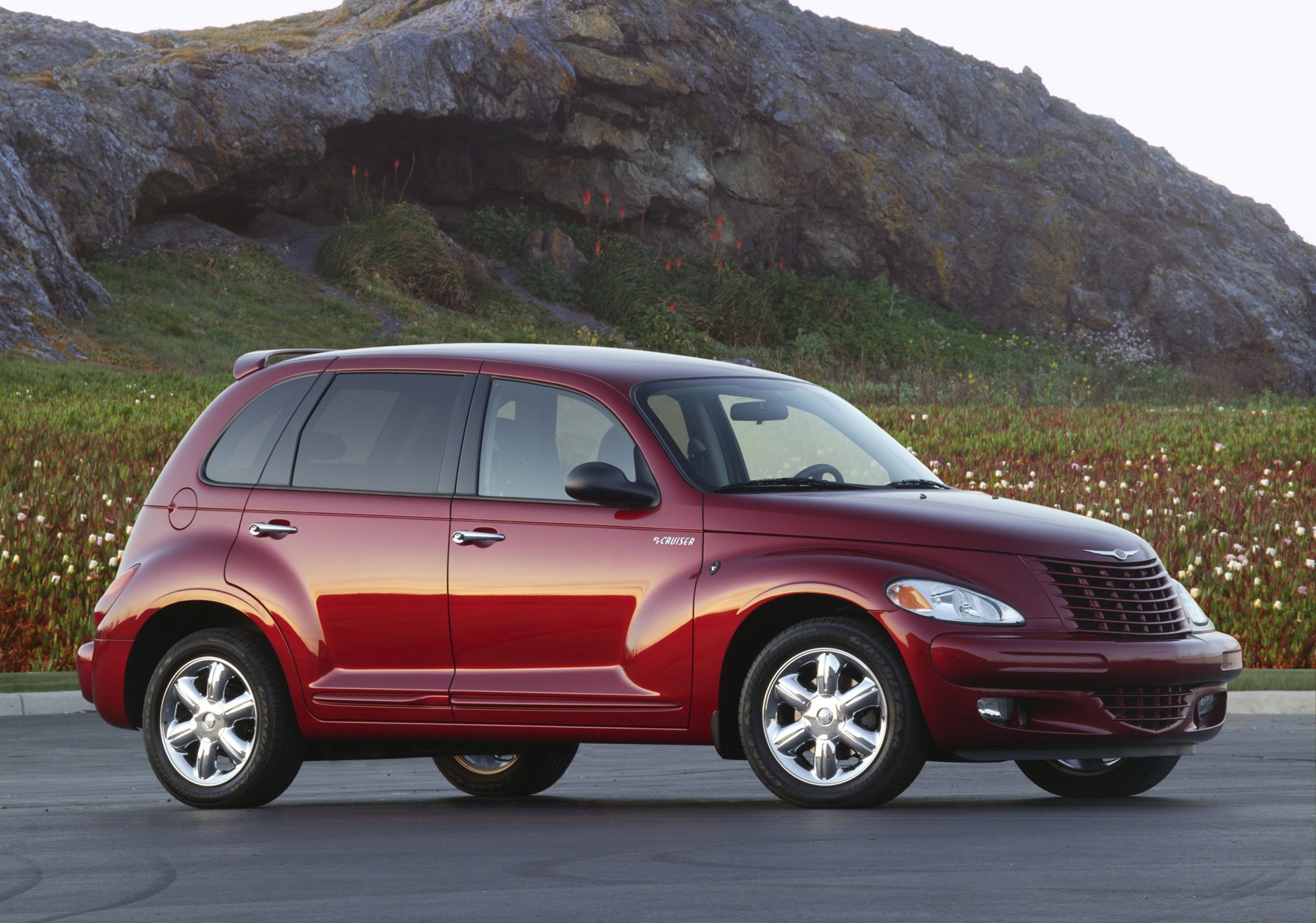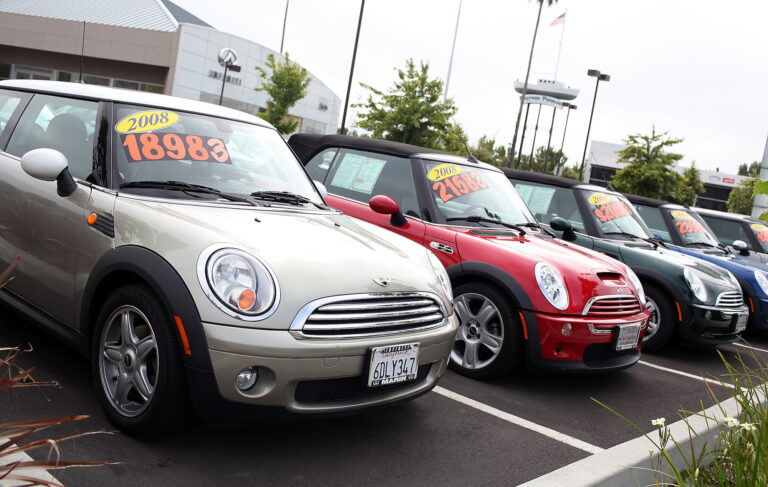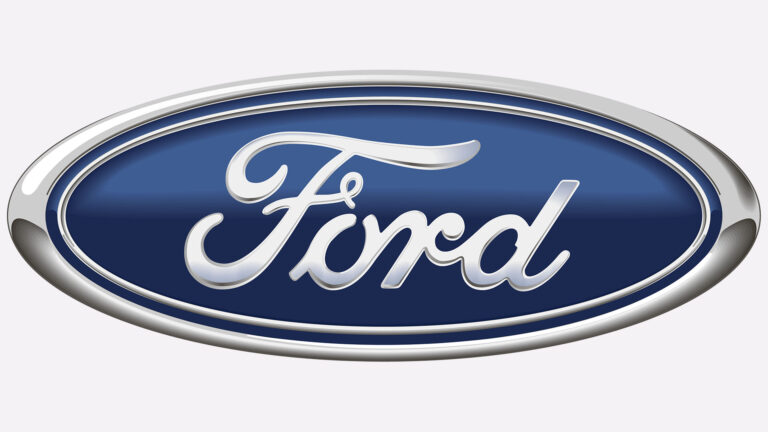Car Brand Classification: Navigating the Automotive Landscape
Car Brand Classification: Navigating the Automotive Landscape cars.truckstrend.com
The automotive world is a vast and dynamic ecosystem, populated by hundreds of brands, thousands of models, and countless variations. For consumers, industry professionals, and enthusiasts alike, understanding this complex landscape can be daunting. This is where Car Brand Classification becomes an indispensable tool. Far more than just grouping vehicles by their manufacturer, classification involves segmenting and categorizing car brands based on a variety of criteria, offering a structured framework to comprehend their market position, target audience, strategic intent, and inherent characteristics.
At its core, car brand classification helps us make sense of the diversity. It allows us to compare apples to apples, identify market trends, forecast future developments, and make informed decisions, whether you’re buying a new car, investing in the automotive sector, or simply trying to understand the nuances of the industry. This comprehensive guide will delve into the multifaceted world of car brand classification, exploring its various dimensions and highlighting its practical applications.
Car Brand Classification: Navigating the Automotive Landscape
The Pillars of Classification: Diverse Approaches to Categorization
Car brand classification isn’t a one-size-fits-all approach. Instead, it leverages multiple criteria, each providing a unique lens through which to view the automotive market. These distinct methods often overlap but collectively paint a complete picture of a brand’s identity and standing.
1. Classification by Market Segment and Price Tier
Perhaps the most intuitive and widely used classification method is based on a brand’s target market and the corresponding price point of its vehicles. This segmentation reflects the perceived value, features, build quality, and prestige associated with a brand.
- Economy/Entry-Level Brands: These brands focus on affordability, fuel efficiency, and essential functionality. They aim to provide reliable transportation at the lowest possible cost, often prioritizing practicality over luxury or advanced features.
- Examples: Dacia, certain models from Hyundai (e.g., Accent), Kia (e.g., Rio), Suzuki (e.g., Alto).
- Characteristics: Basic interiors, smaller engines, fewer advanced tech features, strong focus on value for money.

- Mainstream/Mid-Range Brands: This is the largest and most competitive segment, offering a balance of affordability, features, comfort, and reliability. These brands cater to a broad audience, providing a wide range of body styles and options.
- Examples: Toyota, Honda, Ford, Volkswagen, Nissan, Mazda, Chevrolet.
- Characteristics: Reliable, well-equipped, good resale value, diverse model lineups (sedans, SUVs, trucks, etc.).

- Premium/Luxury Brands: Defined by superior materials, advanced technology, refined driving experiences, powerful engines, and a strong emphasis on comfort and prestige. These brands often serve as status symbols.
- Examples: BMW, Mercedes-Benz, Audi, Lexus, Volvo, Genesis, Cadillac, Acura, Infiniti.
- Characteristics: High-quality craftsmanship, sophisticated infotainment, advanced safety features, strong brand heritage, personalized options.

- Ultra-Luxury/Exotic Brands: At the apex of the market, these brands offer unparalleled exclusivity, bespoke craftsmanship, extreme performance, and often, limited production runs. They cater to an elite clientele where cost is secondary to ultimate luxury, performance, or collectibility.
- Examples: Rolls-Royce, Bentley, Ferrari, Lamborghini, Bugatti, McLaren, Koenigsegg.
- Characteristics: Hand-built components, bespoke customization, cutting-edge engineering, often record-breaking performance figures, significant investment value.
Practical Advice: For consumers, understanding this classification helps in setting realistic expectations for budget and features. For manufacturers, it dictates product development, marketing strategies, and competitive positioning.
2. Classification by Vehicle Type and Body Style
While not strictly a "brand" classification, a brand’s dominant vehicle types heavily influence its identity and target market. Many brands specialize or are historically known for particular body styles.
- Sedan/Hatchback Focused: Brands with a strong heritage in traditional passenger cars. (e.g., Honda, Toyota, Mazda, Volkswagen)
- SUV/Crossover Dominant: Brands that have heavily shifted their focus or built their reputation on sport utility vehicles and crossovers. (e.g., Jeep, Land Rover, Subaru, many modern luxury brands)
- Truck/Commercial Vehicle Specialists: Brands primarily known for their robust pickup trucks, vans, and commercial vehicles. (e.g., Ram, GMC, Isuzu, Ford Commercial)
- Sports Car/Performance Niche: Brands dedicated to high-performance vehicles. (e.g., Porsche, Ferrari, Lotus)
- Emerging EV Niche: Brands exclusively producing electric vehicles, often pioneering new technologies. (e.g., Tesla, Rivian, Lucid)
Considerations: The lines between body styles are blurring (e.g., coupe SUVs, lifted hatchbacks), presenting a challenge for rigid classification. However, a brand’s primary offerings still shape its perception.
3. Classification by Geographic Origin/National Identity
The country of origin often imbues a car brand with a set of perceived characteristics, reflecting national engineering philosophies, design aesthetics, and cultural values.
- German Brands: Known for precision engineering, performance, luxury, and sophisticated technology. (e.g., BMW, Mercedes-Benz, Audi, Porsche, Volkswagen)
- Japanese Brands: Valued for reliability, efficiency, practical innovation, and high quality control. (e.g., Toyota, Honda, Nissan, Mazda, Subaru, Lexus)
- American Brands: Traditionally associated with power, size, robust trucks, and comfort; increasingly embracing new technologies. (e.g., Ford, Chevrolet, Ram, Cadillac, Tesla, Jeep)
- Korean Brands: Gaining prominence for excellent value, modern design, advanced technology, and competitive warranties. (e.g., Hyundai, Kia, Genesis)
- Italian Brands: Renowned for passionate design, exhilarating performance, and emotional appeal. (e.g., Ferrari, Lamborghini, Alfa Romeo, Fiat)
- British Brands: Often linked to heritage, bespoke luxury, and sophisticated design. (e.g., Rolls-Royce, Bentley, Aston Martin, Land Rover, Mini)
Challenge: Globalization means many brands produce vehicles in multiple countries, and some iconic brands are owned by foreign conglomerates (e.g., Volvo is owned by Geely, a Chinese company). Yet, their original national identity often persists in public perception.
4. Classification by Parent Company/Automotive Group
Understanding the corporate umbrella under which brands operate reveals strategic alliances, shared platforms, and integrated development efforts. Major automotive groups control a diverse portfolio of brands.
- Volkswagen Group: Controls Volkswagen, Audi, Porsche, Skoda, SEAT, Lamborghini, Bentley, Bugatti, and Ducati (motorcycles).
- Stellantis: Formed from the merger of Fiat Chrysler Automobiles and PSA Group, encompassing brands like Fiat, Chrysler, Jeep, Dodge, Ram, Peugeot, Citroën, Opel, Maserati, and Alfa Romeo.
- General Motors (GM): Includes Chevrolet, GMC, Cadillac, and Buick.
- Toyota Group: Includes Toyota, Lexus, Daihatsu, and Hino.
- Hyundai Motor Group: Includes Hyundai, Kia, and Genesis.
- BMW Group: Includes BMW, Mini, and Rolls-Royce.
- Mercedes-Benz Group: Controls Mercedes-Benz, Mercedes-AMG, and Maybach.
Benefits: Shared technology, economies of scale, diversified market reach, and the ability to leverage resources across different segments.
5. Classification by Brand Identity and Core Philosophy
Beyond tangible attributes, brands cultivate unique identities and philosophies that resonate with specific consumer values.
- Safety-Focused: Brands that prioritize advanced safety features and crashworthiness above all else. (e.g., Volvo)
- Performance-Oriented: Brands whose entire ethos revolves around driving dynamics, speed, and handling. (e.g., Porsche, BMW M, Mercedes-AMG)
- Innovation/Technology Leaders: Brands known for pioneering new technologies, particularly in electric vehicles or autonomous driving. (e.g., Tesla, Mercedes-Benz, Lucid)
- Off-Road Capability: Brands synonymous with ruggedness and extreme off-road prowess. (e.g., Jeep, Land Rover, Toyota’s TRD line)
- Value/Reliability Champions: Brands celebrated for their long-term durability, low maintenance costs, and strong resale value. (e.g., Toyota, Honda)
Practical Advice: This classification helps consumers align their personal values and priorities with a brand’s inherent character, leading to more satisfying purchases.
Benefits and Challenges of Car Brand Classification
Benefits:
- Informed Consumer Decisions: Helps buyers narrow down choices, understand value propositions, and manage expectations based on a brand’s segment.
- Strategic Market Analysis: Provides manufacturers with insights into market gaps, competitive landscapes, and effective positioning for new models.
- Brand Management and Positioning: Guides brands in maintaining a consistent identity and message across their product lines.
- Investment Insights: Helps investors assess the health and future prospects of automotive companies by understanding their market presence and diversification.
- Industry Trend Forecasting: By observing shifts in classification (e.g., rise of EVs, proliferation of SUVs), analysts can predict future market directions.
Challenges:
- Brand Diversification: Many brands are expanding beyond their traditional segments (e.g., luxury brands offering compact SUVs or even economy-oriented sub-brands), blurring classification lines.
- Emergence of New Categories: Electric vehicles, autonomous driving capabilities, and new mobility solutions constantly challenge existing classification frameworks.
- Globalization and Cross-Ownership: Multinational ownership and global production networks complicate national identity classification.
- Rapid Technological Advancements: Features once exclusive to luxury vehicles are rapidly trickling down to mainstream models, challenging price-tier distinctions.
- Subjectivity: Perceptions of "luxury" or "performance" can be subjective and evolve over time.
Practical Application: How to Use Classification
For the everyday car buyer, understanding these classifications is akin to having a map in a complex city.
- Define Your Needs & Budget: Start by figuring out what you need in a car (utility, fuel efficiency, performance, space) and what you can afford. This immediately places you within a market segment (Economy, Mainstream, Premium, etc.).
- Identify Preferred Body Style: Do you need a truck for hauling, an SUV for family and versatility, or a compact sedan for city driving?
- Consider Brand Reputation/Origin: Are you looking for German engineering, Japanese reliability, or American ruggedness? This helps filter brands based on known characteristics.
- Research Parent Companies: If you like a particular feature or technology, knowing which brands belong to the same parent company might open up more options that share underlying platforms or innovations.
- Align with Brand Philosophy: Do you prioritize safety, cutting-edge tech, or raw driving pleasure? Choose brands whose core identity aligns with your values.
By applying these layers of classification, you can systematically narrow down your choices from hundreds of models to a manageable few that truly fit your criteria.
Comprehensive Car Brand Classification Table
This table provides a concise overview of common classification types, their criteria, illustrative examples, and associated market segments or characteristics.
| Classification Type | Primary Criteria | Examples of Brands/Models | General Price Tier / Market Segment | Key Characteristics |
|---|---|---|---|---|
| Market Segment/Price | Cost, Features, Materials, Prestige | |||
| Economy/Entry-Level | Low cost, basic features, fuel efficiency | Hyundai Accent, Kia Rio, Toyota Yaris, Dacia Sandero | Budget-Friendly | Practical, affordable, essential transport |
| Mainstream/Mid-Range | Balanced value, comfort, features | Toyota Camry, Honda Accord, Ford Focus, VW Golf, Nissan Rogue | Mid-Range | Reliable, versatile, good all-rounders |
| Premium/Luxury | High quality, advanced tech, performance, prestige | BMW 3 Series, Mercedes-Benz C-Class, Audi A4, Lexus ES, Genesis G80, Volvo S60 | Upper-Mid to High-End | Sophisticated, refined, advanced features, status |
| Ultra-Luxury/Exotic | Exclusivity, bespoke features, extreme performance | Rolls-Royce Phantom, Bentley Continental GT, Ferrari SF90, Lamborghini Aventador, Bugatti | Very High-End / Exclusive | Bespoke, ultimate performance/luxury, collector’s item |
| Vehicle Type/Body Style | Design, Functionality, Purpose | (Varies widely within types) | ||
| Sedan | Four-door, separate trunk | Honda Civic, Toyota Corolla, BMW 5 Series | Diverse | Comfort, cargo space, traditional passenger car |
| Hatchback | Rear liftgate, shared cabin/trunk | VW Golf, Mazda 3 Hatch, Mini Cooper | Diverse | Versatile, compact, urban-friendly, flexible cargo |
| SUV/Crossover | High ground clearance, spacious, AWD option | Toyota RAV4, Honda CR-V, Jeep Wrangler, Land Rover Defender | Diverse (most segments) | Versatile, family-friendly, adventurous, commanding view |
| Truck (Pickup) | Open cargo bed | Ford F-150, Chevrolet Silverado, Ram 1500, Toyota Tacoma | Diverse (work to luxury) | Utility, towing, hauling, off-road capability |
| Sports Car | Performance-focused, usually 2-door | Porsche 911, Mazda MX-5, Ford Mustang, Chevrolet Corvette | Mid to High-End | Speed, handling, driving pleasure, iconic design |
| EV (Electric Vehicle) | Powered by electric motor/battery | Tesla Model 3, Hyundai Ioniq 5, Ford Mustang Mach-E, Porsche Taycan | Mid to High-End (currently) | Eco-friendly, quiet, instant torque, charging infrastructure |
| Origin/Country | Country of Headquarters/Primary Design | (Varies widely within origins) | ||
| German | Engineering, performance, luxury | BMW, Mercedes-Benz, Audi, Porsche, Volkswagen | Mid to High-End | Precision, quality, driving dynamics, technological prowess |
| Japanese | Reliability, efficiency, value | Toyota, Honda, Nissan, Mazda, Subaru, Lexus, Infiniti | Economy to Luxury | Durability, fuel economy, strong resale value |
| American | Power, size, trucks, innovation | Ford, Chevrolet, Ram, GMC, Tesla, Cadillac, Jeep | Economy to Luxury (esp. trucks/SUVs) | Robust, comfortable, large vehicles, often bold styling |
| Korean | Value, technology, design | Hyundai, Kia, Genesis | Economy to Premium | Feature-rich, competitive pricing, modern design |
| Parent Company Grouping | Shared ownership, platforms, resources | (Spans all segments within group) | ||
| Volkswagen Group | VW, Audi, Porsche, Skoda, Seat, Lamborghini, Bentley | VW Golf, Audi A3, Porsche 911, Skoda Octavia | Economy to Ultra-Luxury | Shared platforms, diverse brand portfolio, R&D synergy |
| Stellantis | Fiat, Chrysler, Jeep, Peugeot, Citroën, Dodge, Ram | Jeep Wrangler, Ram 1500, Peugeot 3008, Fiat 500 | Economy to Premium (focus on SUVs/trucks) | Broad portfolio, regional strengths, heritage brands |
| Toyota Group | Toyota, Lexus, Daihatsu, Hino | Toyota Camry, Lexus RX, Daihatsu Terios | Economy to Luxury | Global presence, reliability focus, efficient manufacturing |
Frequently Asked Questions (FAQ)
Q1: Why is Car Brand Classification important?
A1: It helps consumers make informed purchasing decisions, aids manufacturers in market positioning and strategy, assists investors in understanding the industry, and generally brings order to the vast and complex automotive market.
Q2: Is car brand classification fixed, or does it change?
A2: Classification is highly dynamic. Brands evolve, new technologies emerge, and market trends shift. A brand that was once considered mainstream might move into the premium segment (e.g., Genesis from Hyundai), or vice-versa. New vehicle types (like EVs) also create new categories.
Q3: How do new EV brands like Tesla or Rivian fit into traditional classifications?
A3: New EV brands primarily fit into the "Technology/Innovation Leaders" and often "Premium/Luxury" or "Performance" segments due to their advanced features and pricing. They also form a distinct "EV Niche" under vehicle type. As EVs become more mainstream, we’ll see economy and mainstream EV brands emerge.
Q4: Do luxury brands ever produce "economy" cars?
A4: Not directly, but luxury groups might own mainstream brands (e.g., Volkswagen Group owns Skoda, which is a mainstream brand). Also, luxury brands sometimes offer "entry-level" models within their own premium segment (e.g., a BMW 1 Series or Mercedes-Benz A-Class), which are more affordable than their larger, more luxurious siblings but still fall within the premium classification.
Q5: What’s the main difference between "Premium" and "Luxury" classification?
A5: While often used interchangeably, "Premium" typically refers to brands offering higher quality, better performance, and more features than mainstream, but still with a relatively broad appeal and production volume. "Luxury" often implies even higher levels of exclusivity, bespoke craftsmanship, ultimate performance, and prestige, often with significantly higher price tags and lower production numbers (e.g., Mercedes-Benz is Premium/Luxury, Rolls-Royce is Ultra-Luxury).
Q6: How does multinational ownership affect a brand’s classification by origin?
A6: While a brand might be owned by a foreign company (e.g., Volvo by Geely), its historical national identity often persists in public perception and design philosophy. However, shared platforms and global production can sometimes dilute the distinct national characteristics over time.
Conclusion: A Dynamic Lens on the Automotive World
Car brand classification is more than just an academic exercise; it’s a vital framework for comprehending the intricate dynamics of the global automotive industry. From the casual car buyer to the seasoned market analyst, understanding how brands are categorized provides clarity, facilitates informed decision-making, and illuminates the strategic maneuvers of manufacturers. While the automotive landscape is constantly evolving, with new technologies, market trends, and corporate alliances reshaping its contours, the principles of classification remain steadfast. It empowers us to navigate this exciting and ever-changing world, ensuring that we can always find our way, whether searching for the perfect vehicle or simply appreciating the ingenuity behind each brand.





